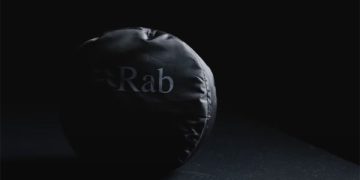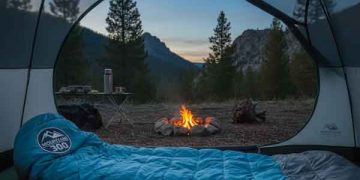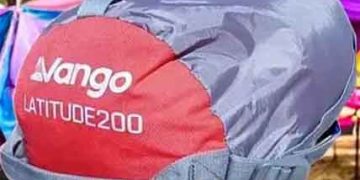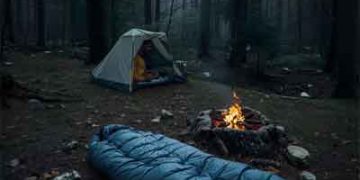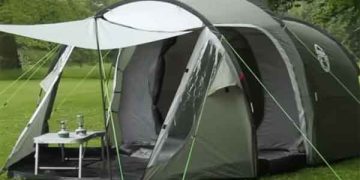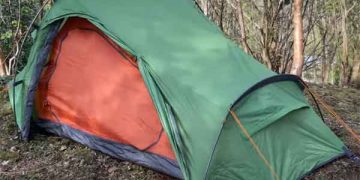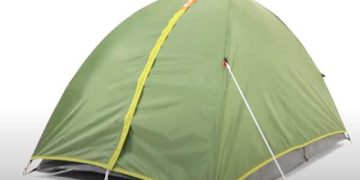I’ve learned that the difference between a good trip and a great one often comes down to a single piece of gear. Planning the adventure is easy; the real challenge is cutting through the noise to find equipment that strikes a perfect balance—rugged enough for a sudden cold snap, yet sensible for the trips we actually take, without the expedition-level price tag.
I’ve been keenly watching the buzz around the Rab Alpine Trek 300, as recomended by a friend. It promises to be that elusive ‘sweet spot’ for three-season use. In this hands-on review, I’ll put its claims to the test against my own field experience to see if it truly earns a place in your pack.
Unpacking the Rab Alpine Trek 300: More Than Just a Puffy Blanket
First off, who is Rab? For those not in the know, Rab is a UK-based brand founded by mountaineer Rab Carrington, and they’ve built a stellar reputation for creating high-performance, no-nonsense outdoor gear. The Alpine Trek line is designed to bridge the gap between heavyweight car-camping bags and ultra-lightweight (and ultra-expensive) mountaineering sacks.
The Alpine Trek 300 is the middle child of the family, sitting between the lighter 200 and the warmer 400 models sleeping bags. Its name gives away its flagship feature: it’s stuffed with 300g of Hydrophobic Down. Now, if your eyes just glazed over, don’t worry. This is the good stuff, and it’s what makes this bag so special for damp UK or Pacific Northwest climates.
Traditional down is amazing—it offers the best warmth-to-weight ratio you can get. But get it wet, and it loses its loft (its fluffiness) and its ability to keep you warm. Rab’s hydrophobic down is treated with a durable water repellent (DWR) finish that makes the individual down clusters resist moisture. This means it retains its insulating power much better in humid conditions or if you accidentally drag a damp sock into your bag. It’s a game-changer for reliability on unpredictable short trips.
Key Features at a Glance:
- Fill: 300g of 650 FP Hydrophobic European Goose Down
- Shell: 30D Protex® 100% Nylon (lightweight and durable)
- Comfort Rating: Around -2°C (28°F) – perfect for spring, summer, and autumn in most climates.
- Shape: Mummy-shaped, but with a bit more room in the shoulders and feet than a super-aggressive mountaineering bag. This is a “trek” bag, after all, prioritizing a good night’s sleep over shaving every last gram.
- Weight: Approximately 990g (for the regular size). That’s under 1kg!
- Packed Size: Compresses down to about the size of a large watermelons—but can squash even smaller with a good stuff sack.
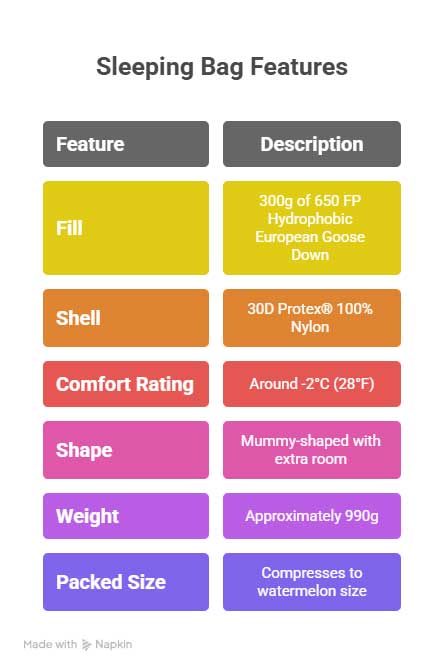
The All-Important Comparison
Okay, so it sounds good on paper. But how does it compare to other options you might be considering? The real value of the Alpine Trek 300 becomes clear when you see it in context.
Let’s put it in a table against two common alternatives: a budget synthetic bag and a high-end ultralight down bag.
| Feature | Rab Alpine Trek 300 (Down) | Typical Budget Synthetic Bag | High-End Ultralight Down Bag |
|---|---|---|---|
| Warmth for Weight | Excellent | Poor | Exceptional |
| Packability | Very Good (gets small) | Bulky (huge backpack footprint) | Superior (tiny) |
| Durability | Very Good | Fair to Good | Good (but often uses thinner fabrics) |
| Damp Weather Performance | Excellent (Hydrophobic Down) | Good (synthetic insulates when wet) | Poor (standard down fails when wet) |
| Price Point | Mid-Range ($$$) | Budget ($) | Premium ($$$$) |
| Best For | Short getaways, 3-season trekking | Car camping, loaners for friends | Thru-hiking, alpine missions where every gram counts |
As you can see, the Alpine Trek 300 sleeping bag occupies a unique space. It’s not the absolute lightest or most packable, but it’s a massive leap from a bulky synthetic bag. And while it’s not as bombproof as a dedicated synthetic bag in a downpour, its hydrophobic treatment gives it a huge advantage over standard down bags when things get dewy or damp.
This table, based on specs from outdoor retailers like REI’s buying guide, shows why it’s such a compelling choice. It’s the balanced option for those who want quality and performance without going overboard.
What It’s Actually Like to Sleep In
I’ve taken my Alpine Trek 300 on a handful of trips now—a chilly night in the Lake District, a breezy coastal camp, and even a ridiculously muddy festival. Here’s the lowdown.
The Good:
- Comfort Zone: The temperature rating feels accurate. I was perfectly comfortable in base layers down to around 2-3°C (35°F). The differential cut (where the inner and outer layers are cut differently to fit the body’s shape) eliminates cold spots and makes it feel genuinely cozy.
- Packability: Throwing this bag into my 45L backpack for a weekend trip is a dream. It compresses down, leaving plenty of room for food, a stove, and a spare pair of socks. This alone makes short getaways less of a logistical nightmare.
- Build Quality: This is where Rab shines. The box-wall baffles on the top prevent the down from shifting and creating cold spots. The YKK zip is smooth and doesn’t snag. The stitching is impeccable. It feels like a piece of gear that will last for years of adventures.
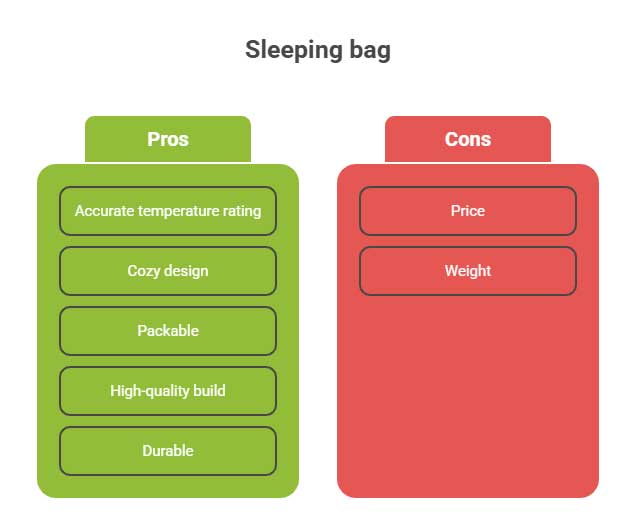
The Considerations:
- The Mummy Fit: If you’re a restless side-sleeper or just hate feeling confined, the mummy shape might take some getting used to. While it’s roomier than some, it’s still a fitted bag. You can’t sprawl out like in a rectangular bag.
- Price: It’s an investment. You’re paying for ethical down and premium construction. However, as gear experts at OutdoorGearLab often note, a good down bag, if cared for, will last over a decade, making its cost-per-use very low over time.
- Not a Winter Option: Remember, this is a 3-season bag. For deep winter camping, you’d want the Alpine Trek 400 or something even warmer.
So, Who Is the Rab Alpine Trek 300 Really For?
After all this, the verdict is pretty clear. The Rab Alpine Trek 300 isn’t a niche product; it’s arguably one of the most practical sleeping bags on the market for a huge range of people.
It’s for the weekender who values a good night’s sleep after a long day on the trail. It’s for the festival-goer who wants to stay warm in style and comfort without hauling a giant duvet. It’s for the traveler hopping between hostels and mountain huts who needs something reliable that won’t fill their entire suitcase.
It’s the sleeping bag you grab when you’re not sure what the weather will do, but you know you want to be prepared. Its blend of hydrophobic down, thoughtful design, and respectable packability makes it incredibly versatile.
Is It Worth It For Your Short Getaways?
If your short getaways are your primary source of adventure and you see yourself doing more of them, then yes, absolutely. The Rab Alpine Trek 300 is a classic case of “buy nice or buy twice.” Skipping the cheap, bulky bag and investing in this will transform your experience.
You’ll spend less time wrestling with an overstuffed backpack and more time enjoying the campfire. You’ll sleep better, wake up warmer, and have a reliable piece of gear ready for whatever spontaneous plan comes next. In the world of short-trip gear, that’s not just a purchase; it’s an upgrade to your entire adventure lifestyle.
What’s your go-to sleeping bag for a quick escape? Have you tried the Alpine Trek series? Let me know your thoughts
